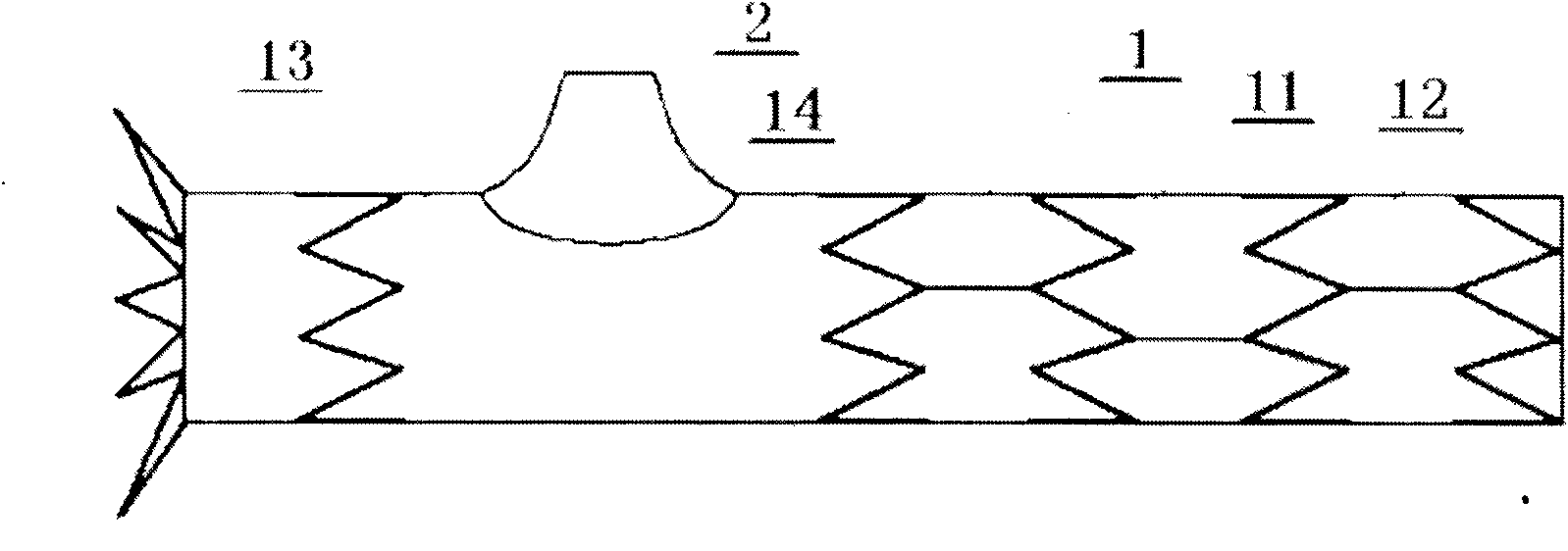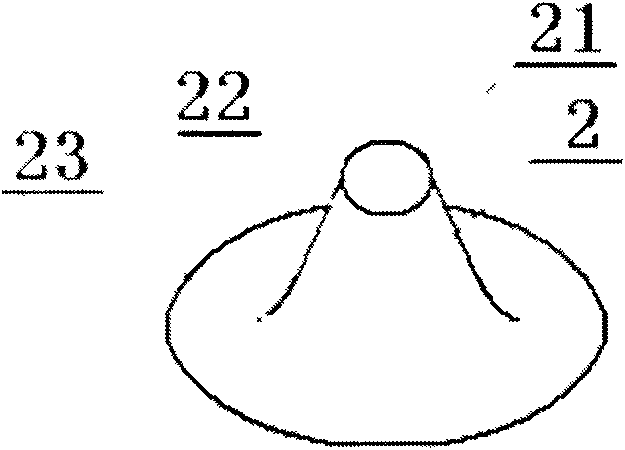Self-protuberant aortic intracavity implant
A technology of aorta and grafts, applied in stents and other directions, to simplify the surgical treatment process, overcome the influence, and fix reliably
- Summary
- Abstract
- Description
- Claims
- Application Information
AI Technical Summary
Problems solved by technology
Method used
Image
Examples
Embodiment Construction
[0012] exist figure 2 In this method, a portion of the membrane covering the end of the existing aortic endograft proximal to the hook is trimmed.
[0013] exist figure 1 In , the braid of the present invention is sutured to an existing graft. In the operation, the central region of the membrane-like braid of the present invention is opposed to the opening of the left subclavian artery, the graft is released, and the central region protrudes into the left subclavian artery under the pressure of the aortic blood pressure, and its top end is under pressure. Becomes more sparse and forms an opening, which can maintain some or all of the blood supply of the left subclavian artery. If the blood supply of the left subclavian artery cannot be fully restored, the tip can be ballooned after the stent is placed to fully restore it. Blood supply of the left subclavian artery.
PUM
 Login to View More
Login to View More Abstract
Description
Claims
Application Information
 Login to View More
Login to View More - R&D
- Intellectual Property
- Life Sciences
- Materials
- Tech Scout
- Unparalleled Data Quality
- Higher Quality Content
- 60% Fewer Hallucinations
Browse by: Latest US Patents, China's latest patents, Technical Efficacy Thesaurus, Application Domain, Technology Topic, Popular Technical Reports.
© 2025 PatSnap. All rights reserved.Legal|Privacy policy|Modern Slavery Act Transparency Statement|Sitemap|About US| Contact US: help@patsnap.com



